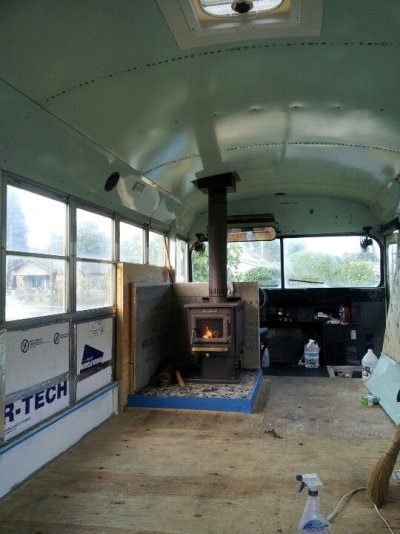One question that hasn't been addressed above is how much heating capacity is required to supply two bus heaters and the hot water heater and how much is available from the engine cooling system. So bear with me for a bit of geekiness:
Let's start with a rule of thumb given to me by Tony Athens: marine engines turn 1/3 of their fuel burned into rotational energy, 1/3 goes out the exhaust and 1/3 is absorbed by the cooling system. So given that the Krogen 42 usually comes with the Lehman 135 hp engine and probably runs at 50 hp for moderate cruising speeds, that means another 50 hp is absorbed by the engine cooling system. Converting that to btu/hr gives approximately 130,000 btu/hr.
A small Red Dot heater produces 16,000 btu/hr so 32,000 btu/hr for both. A 6 gallon water heater, starting from a cold water temp of 60 F and heating to 140 F in 30 minutes requires 6*8.3*(140-60) = 4,000 btu or 8,000 btu/hr heating rate. BTW, this doesn't mean that there is enough heat transfer capacity to do it that fast, only how much heat is required to do it if possible.
So add them all up: 16+16+8= 40,000 btu/hr which is about 1/3 of the heat transferred to the engine's cooling system.
It shouldn't be a problem.
David

